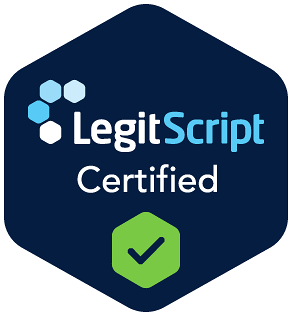If you or a loved one are struggling with self-harm, you’re not alone. Approximately 17% of adolescents and young adults engage in self-injurious behaviors, but recovery is possible with proper treatment. At Archway Behavioral Health, we offer a comprehensive range of evidence-based therapies to help you overcome self-harm and develop healthier coping mechanisms. Our expert clinicians utilize Cognitive Behavioral Therapy (CBT), Dialectical Behavior Therapy (DBT), EMDR, and trauma-focused approaches in both individual and group settings. These therapeutic modalities are integral components of our Partial Hospitalization Programs (PHPs) and Intensive Outpatient Programs (IOPs), providing you with the tools and support needed to achieve lasting recovery and improved mental health. Take the step toward reclaiming your life and health—contact us at (888) 488-4103.
Why People Self-Harm
Self-harm refers to intentionally injuring one’s own body, often as a way to cope with intense emotional pain or distress. Common forms include cutting, burning, hitting, scratching, and rubbing the skin aggressively.
Temporary Relief
Many turn to self-harm as a coping mechanism to manage overwhelming negative emotions such as depression. According to research, it can provide a temporary sense of relief or control, though it does not address the underlying issues. For some, seeing blood or feeling pain helps them “feel something” when they otherwise feel numb.

Call for Help
Self-harm may also be a way to communicate internal turmoil or a need for support to others. A study from the National Institutes of Health found that supportive relationships can reduce the urge to self-harm more effectively than distraction techniques alone.
Hospital visit rates for intentional self-harm are higher for females and 15-24- year-olds. While self-harm is a serious behavior requiring professional treatment, there are ways to begin the recovery process through compassionate understanding and accessing the appropriate care.
Cognitive Behavioral Therapy for Self-Harm
Cognitive behavioral therapy (CBT) is a highly effective treatment for self-harm behavior. CBT helps identify and replace unhealthy beliefs and behaviors that drive self-injury.
CBT Techniques
Through CBT, individuals learn to recognize negative thought patterns and develop healthier coping strategies. Key techniques include:
- Cognitive restructuring to challenge irrational, self-defeating thoughts
- Behavior activation to increase engagement in positive activities
- Emotion regulation skills to manage intense feelings constructively
Addressing Underlying Issues
Self-harm often stems from deeper mental health conditions like depression, anxiety, or trauma. CBT addresses these root causes, empowering individuals to work through unresolved issues driving self-destructive urges. With practice, new perspectives and behaviors replace old, harmful patterns.
Dialectical Behavior Therapy for Self-Harm
Dialectical Behavior Therapy (DBT) is an effective psychotherapy for reducing self-harm and suicidal ideation, particularly in adolescents. According to a systematic review, DBT shows small-to-moderate effects compared to control interventions, with large reductions in self-harm and suicidal thoughts pre- and post-treatment.
DBT’s Approach
A key DBT technique is behavior chain analysis, which examines the sequence of events, thoughts, and emotions leading to self-harm. Therapists use this tool to identify points where coping skills could prevent future self-injury.
Building Resilience
DBT also teaches distress tolerance skills like TIPP (temperature, intense exercise, paced breathing, paired muscle relaxation) to activate the body’s calming reflexes. While distraction provides temporary relief, the goal is developing long-term emotion regulation strategies for a life worth living.
EMDR Therapy for Self-Harm
EMDR (Eye Movement Desensitization and Reprocessing) therapy has shown promise in treating self-harm behaviors. This approach helps clients process underlying trauma and emotional distress driving self-harm urges. Techniques like ego state work, the DeTUR protocol, and resourcing build self-regulation skills.
Trauma Processing
By reprocessing triggering memories with EMDR, clients can reduce the distress fueling self-harm. One case study described an 18-year-old who stopped self-injuring after just two EMDR sessions for trauma. Clinicians report EMDR helps patients reconnect with their bodies and find alternatives to self-harm.
Group Therapy for Self-Harm
Group therapy provides a supportive environment for individuals struggling with self-harm behaviors. In these sessions, participants learn coping strategies, emotion regulation skills, and connect with others facing similar challenges.
A Therapeutic Approach
One approach is dialectical behavior therapy (DBT) for adolescents, which combines DBT skills training with a therapeutic support group. The skills portion teaches mindfulness, distress tolerance, and emotional regulation, while the group segment allows for shared experiences and peer support.
Intensive Outpatient Programs for Self-Harm
Understanding Self-Harm
Self-harm refers to intentionally inflicting harm on oneself, often as a coping mechanism for intense emotional distress. Common signs include wearing long sleeves to conceal injuries, unexplained injuries, and social isolation. It’s a complex issue often linked to trauma, eating disorders, and other mental health challenges.
The Role of IOPs
Intensive Outpatient Programs (IOPs) offer a structured, intensive therapeutic approach for individuals struggling with self-harm. IOPs provide a supportive environment to explore underlying causes, develop coping mechanisms, and build healthier outlets for managing emotions. Nearly 45% of those who engage in self-harm show significant improvement in managing their behaviors after participating in an Intensive Outpatient Program (IOP). Regular therapy sessions, group support, and skill-building activities equip participants with tools to break the cycle of self-harm.
Comprehensive Treatment
IOPs incorporate evidence-based therapies like Dialectical Behavior Therapy (DBT) and Cognitive Behavioral Therapy (CBT). Archway Behavioral Health highlights the importance of addressing co-occurring conditions like depression, which often contribute to self-harm behaviors. A multidisciplinary team provides individualized treatment plans, fostering lasting positive change and a path to recovery.
Conclusion
As you navigate the path to recovery from self-harm, remember that effective treatments are available. CBT, DBT, EMDR, and other evidence-based therapies offered at Archway Behavioral Health can provide the tools and support you need to overcome this challenge. Whether through individual sessions, group therapy, or intensive outpatient programs, these approaches address the underlying issues driving self-harm behaviors. By engaging in treatment, you join the 70% of individuals who successfully reduce or stop self-harm within five years. Your journey to healing is possible, and with the right therapeutic support, you can develop healthier coping mechanisms and build a life free from self-harm. Take the step toward reclaiming your life and health—contact us at (888) 488-4103.


